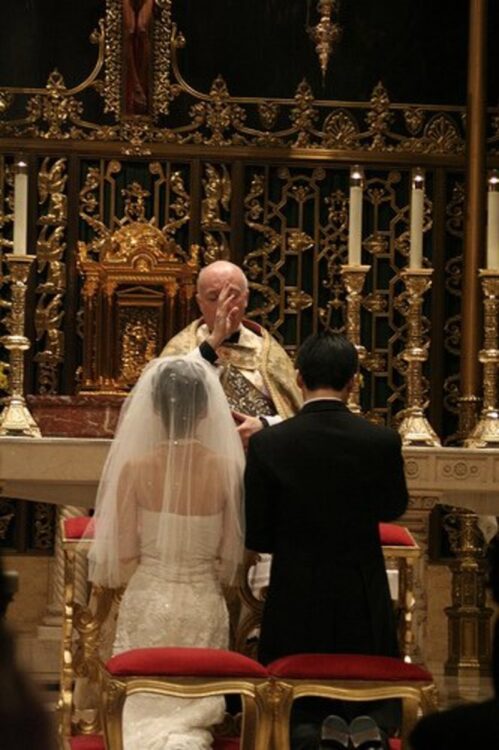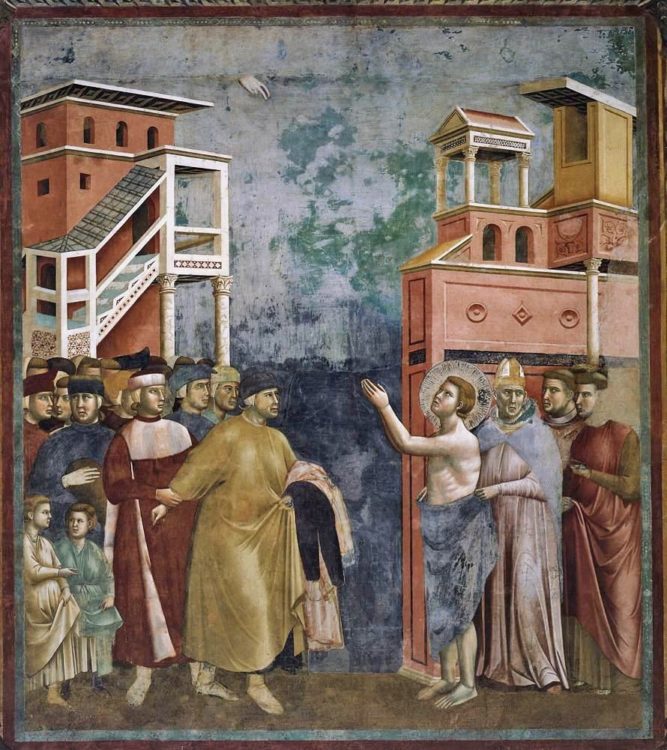The Sunday after Pentecost in the Western liturgical calendar is the Festival of the Holy Trinity. Preachers often say that it’s the only Sunday of the year in which we celebrate a doctrine. One would hope that the reality of God as Trinity is more than a doctrine, and that preachers will not devote their sermon to stumbling over ways of make sense of the one-in-three and three-in-one.
Liturgical History of Trinity Sunday
The Western Church had a pastoral reason for emphasizing the Trinity. The barbarian tribes that moved into Western Europe, gradually dissolving the old Roman Empire, were not pagans. They were Arian Christians who believed that the Son is subordinate to the Father. Texts such as the great creedal hymn, Te Deum laudamus (We praise you, O God), and the so-called Athanasian Creed (actually it reflects more Augustine’s approach to the Trinity), developed in southern France in the fifth century. Liturgical propers were developed for a Mass devoted to the Holy Trinity, although it was not assigned to any particular day.
Many Frankish bishops assigned it to the Sunday after Pentecost. The Franks were a people in the area of the The Netherlands and northern France who embraced Catholic Christianity when their king, Clovis, was baptized in Reims on Christmas Day in 508 (see the image above this article). As Frankish devotion to the Trinity grew, Pope John XXII in 1334 made it an official festival for the whole Western Church on the Sunday after Pentecost. But by the late middle ages, in a time of war and plagues and the Black Death, devotion to the Holy Trinity intensified. Newly built parish and cathedral churches across Western Europe were named Trinity. Invocation of the persons of the Trinity and finally “Holy Trinity, one God” became the beginning of the Great Litany, pleading, “have mercy on us.” The Great Litany was prayed on penitential days and in pleas to God to avert disasters and sustain earth and human society. I propose that rather than preach on the Trinity as doctrine, we preach on the Trinity as the source and sustenance of our life.
Here is an expanded version of the sermon I preached on the Festival of the Holy Trinity on June 11, 2017. It was Year A in the Common Lectionary, and the texts were Genesis 1:1-2:4a and Matthew 28:16-20 – the so-called Priestly creation story at the beginning of Genesis and the Great Commission at the end of the Gospel of Matthew.

Trinity and Cosmology
As we enter into summertime and get out into God’s world, it seems appropriate to begin with the creation story from Genesis. It’s also good to look more deeply at what this so-called priestly account of creation really says. Sometimes it helps to be literal, that is, to pay attention to words and phrases and how they get translated. In this regard I would point out that the Hebrew text does not say “In the beginning God created.” It literally says, “In the beginning when God began to create…” The text suggests that creation is an ongoing activity.
Nor does Genesis teach creation out of nothing. The Genesis text indicates that there was already something. The earth was there but without solid form. Modern cosmology tells us that our planet was a fiery ball spun out from the sun. As the fiery ball condensed and cooled, vapors were released that formed water (H2O) on the surface of the Earth. Water is formless in itself but goes where it can be contained. To the ancient Hebrews lack of form meant chaos, and they equated chaos with evil. The ongoing work of creation is God’s effort to bring order out of chaos because chaos – evil – persists, as we know all too well. What God did in the work of creation was “good” because it countered the persistence of evil.
As summer comes we’re invited outdoors to experience the natural world. We take trips to national parks to see the grandeur of nature. But we can also explore the miniature wonders of nature in our gardens, parks, and fields. Wonders big and small evoke a sense of awe, and therefore wonder is the source of worship.

Sabbath and Worship
We’re at the beginning of the summer vacation season. For a lot of people this also means vacation from worship. In this regard I would point out that the priestly author of the first creation account in Genesis is really building a case for weekly Sabbath observance. God’s work on the six days leads to God’s rest on the seventh day, a day which God blessed and hallowed. That’s what the six days are all about. They represent workdays, and they are a lead-up to the seventh day, a day of cosmic rest. The Jewish and Christian traditions have held that the proper human response to God’s rest is for us to also rest from our usual work. But this doesn’t mean that we do nothing. The purposeful use of the Sabbath is to worship God and study God’s word. To turn to God is to turn away from evil, at least every seventh day.
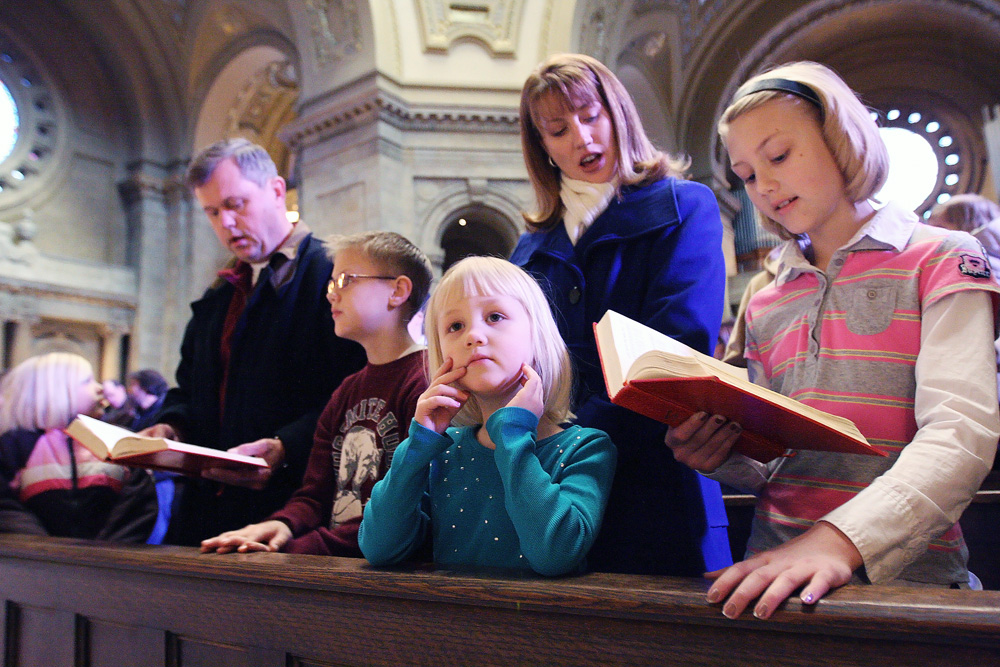
A Plural God and a Plural Humanity
But this is Trinity Sunday. Why is the first Genesis creation story our reading on this particular day? Where is there a reference to the Trinity in this Old Testament text? You might think: well, the text says that God created through his life-giving breath that moved over the formless void, and by his word, his self-communication. These become personified later in the Bible as the Holy Spirit and the Logos, identified with the Son. So, on this basis we can affirm that the God of creation is the Holy Trinity. God the Father creates by means of his Spirit and through his Word, incarnate in Jesus. “Through him all things were made,” says the Gospel of John. To paraphrase the so-called Athanasian Creed, the Father is the creator, the Son is the creator, the Holy Spirit is the creator; yet there are not three creators but one God who creates.
But the church fathers saw the Trinity more explicitly in verse 26. “Then God said, ‘Let us make humankind [the Hebrew is “adam”] in our image, according to our likeness.” Who is God talking to when he says, “Let us make”? Is this just the so-called “plural of majesty,” like when the queen says, “We are pleased?” If so, why isn’t this expression used elsewhere in the Bible? Is God talking to the heavenly creatures? Did they have a role in helping God to create humankind? No, they have no such creative power. The only solution is that God is talking to Godself. God is a plural personality.
Moreover, the text goes on to say that God created humankind plural: male and female. Humankind is created to complement and complete one another, just as God in three persons complements and completes Godself. While there’s a lot of discussion today about gender being on a sliding scale, this isn’t about gender (which is a cultural construct); this is about biology. “Male and female God created them.”
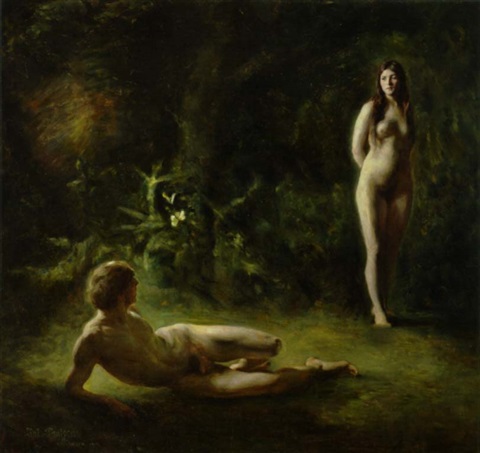
In the years before I retired, I had a weekly evening Bible study group at Immanuel, Evanston. We began “In the beginning” with Genesis and worked our way through the Bible, verse by verse, chapter by chapter, book by book. We made it through the Books of Kings and Chronicles before the time came for me to retire. But I’ll never forget that when we completed Genesis, one of our regulars said, “Why, this book is all about sex!” Yes, it is. Begetting is about procreation. In the unfolding story it mattered who gave birth to whom.
Genesis 1 says that humankind is created in the image and likeness of God. In our need for one another we reflect the being of God. You can go in both directions with this. You can say that the fact of human sexual polarity and complementary points to God as a community of persons, and you can say that God as a community of persons creates humankind in God’s own image as a community of persons. The second creation story in Genesis 2 says, Adam is not meant to be alone. It is not good to be a self-contained organism which proceeds to develop itself. In order to develop and mature, we must have a partner, a companion, a “thou” to relate to my “I.”
Marriage and Family
Usually “I” and “thou” find expression in the marriage of a man and a woman. That’s not the only kind of relationship in which complementary and community can be experienced, but it is the most fundamental one. Yet even marriage can fail to attain its God-given potential if the couple lives only for each other. There are a lot of things people can enjoy with each other: in no particular order, there’s work and vacation trips, music and art, sports and sex…and more. But in their love for each other, a couple does not reach their fulfillment when the two make their companionship an end in itself and they are just taken up with each other. Marriage doesn’t exist just for its own sake; it also exists for the sake of others, including for the sake of children. The blessing of God on marriage is found in the command, “be fruitful and multiply.” And if the gift of children is denied through no fault of the couple, God sends other blessings and gives other responsibilities; for God is always the Giver of every good and perfect gift.

Marriage is in trouble today as an institution. In North America, Europe, and East Asia fewer and fewer couples want to get married or they wait longer to get married. Procreation is down and nations are not producing enough offspring to care for the next generation in their retirement. This is because we continue to be more focused on “me” than on “community.” We’re more concerned with what I want, and what I desire, what I think I deserve, what I am afraid of, rather than with what is best for my my community, my nation, my world. While there may have been one generation called the “me” generation, the truth is that every generation is the “me” generation—from Adam and Eve on. Marriages stumble and crumble over issues of “me” over against “you.” Families have difficulties and dissolve over issues of “me” over against “you.”
Groups like “Focus on the Family” try to protect marriage by attacking same-sex marriage. But in my experience, since the legalization of same-sex marriage in 2016 (the U.S. Supreme Court’s decision in Obergefells v. Hodges), we have seen gay and lesbian couples taking their places in society as responsible citizens. In some cases this has included providing foster care to children in need and then adopting them — and giving these children a more loving and caring life than they would have received otherwise. Through these experiences we begin to see the role that gay and lesbian couples can play in society. They fill in the gaps in the social structure — gaps often created by human sin that produce a world that is less than the wholeness and harmony God intended.
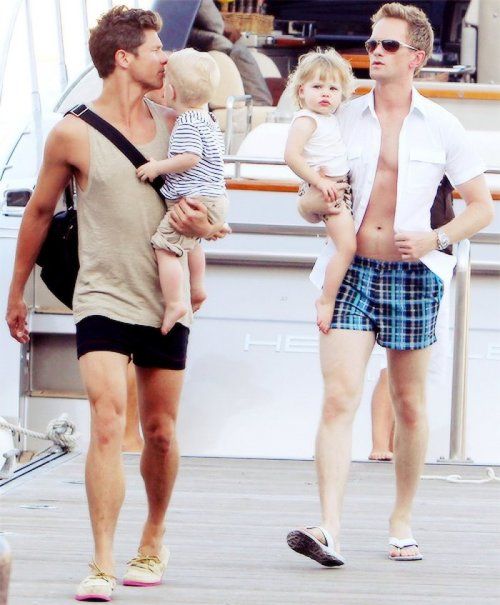
Conflicts at work, tensions in neighborhoods, gang violence, hatred and intolerance between races, wars between nations, all get their start with issues of “me” over against “you.” That’s what we’re experiencing in our nation now with an intensity we’ve not known in years. How will this divisiveness ever be reconciled? If “me” over against “you” has been with us since the beginning, what hope is there of ever overcoming these tensions and conflicts?
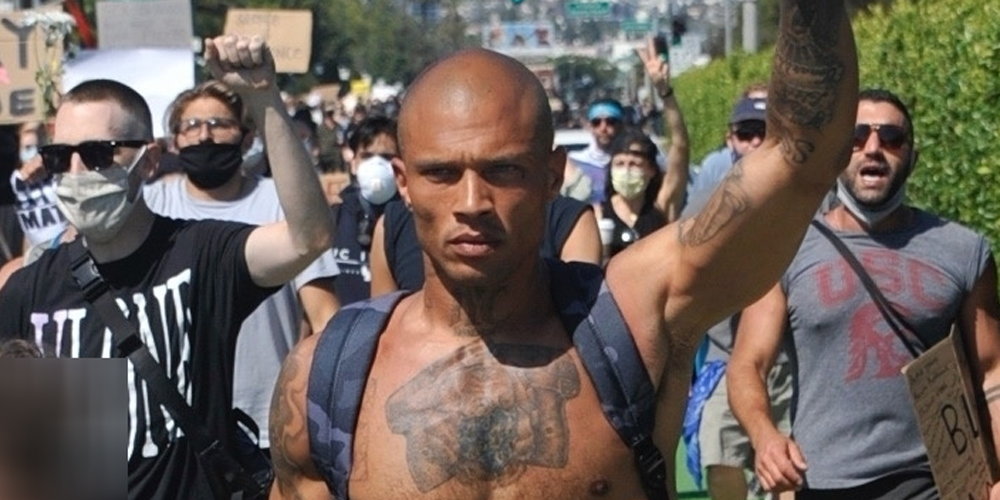
Reconciled in Christ
Our hope is in the saving act of God in Jesus Christ. Our hope for society as well as for ourselves individually is in Christ crucified. Our hope is that as we sinners are reconciled with the Holy God through the sacrifice of Christ on the cross, we will be reconciled and restored to our brothers and sisters as well — so that through the cross of Christ humanity will be gathered into one, to live in peace with God, with others, and with the creation of which we are a part.
Medieval images of the Trinity depict the bearded Father holding up the crucified Son with the dove of the Spirit as the bond between them. It is worth noting that devotion to the Trinity, which resulted in the establishment of Trinity Sunday as a universal festival, emerged during a time of plague and warfare, of suffering and death. It’s like people needed the fullness of God to cope with the brutality of life. The Western icon of the Trinity represents a kindly Father supporting his suffering Son and the Holy Spirit as the dove proceeding from the Father. The suffering Son identifies with suffering humanity.

Pope Benedict XVI, who as Joseph Ratzinger was truly one of the great Catholic theologians of the twentieth century, writes that the answer to this “me” against “you” or “I” against “Thou” is the Trinity, “that ultimate unity in which the distinction between I and Thou is not withdrawn, but joined to each other in the Holy Spirit. In God there are three Persons, and so God is precisely the realization of ultimate unity. God did not create an individual person so that he might be dissolved but so that he might open himself in his entire height and in his innermost depth — so that the Holy Spirit embraces the individual person and is the unity of the divided persons.” In practical terms, says Pope Benedict, “the Church in the deepest part of her nature, is the overcoming of the boundary between I and Thou — the union of all persons among themselves, through the radical transcendence of self, into eternal love.”
Baptism and Holy Communion
The Church is humankind being brought into the life of the Holy Trinity through word and sacrament. For this reason, Jesus sends us forth to make disciples of all nations, baptizing them in the name of the Father, the Son, and the Holy Spirit and teaching them to observe everything that Jesus has commanded. In entering into the life of the Holy Trinity through Baptism, our “me” against “you” is replaced with Holy Communion—a relationship with God and others that transcends our self‑centeredness and is fused into that new creation that is called the Body of Christ. This new relationship requires truly a death of the old me-centered Adam in Baptism, so that, as St. Paul writes, it will now be “not I who lives, but Christ who lives in me.”
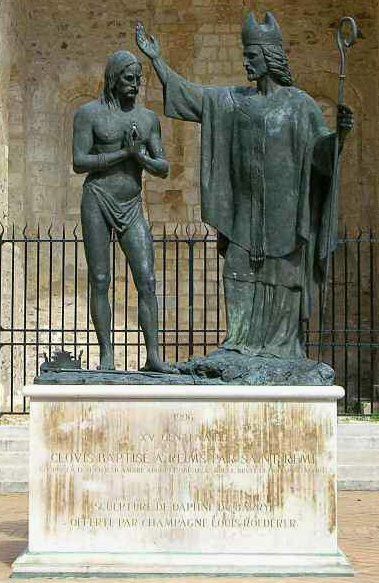
How does Christ live in me and in us together except by eating and drinking, ingesting and digesting the divine Godhead, present for us in the earthly gifts of bread and wine which we received in faith as the Body and Blood of God incarnate in Jesus Christ. In Holy Communion we together, every Lord’s Day, turn away from evil in the world – the world reverting to chaos – and face toward God, taking our places at the table of God’s kingdom where there is always room for one more. We secure our place at the table by going to the font of life and drowning the old self-centered Adam and Eve to emerge by water and the Spirit as new creatures in a new creation ready to share in the marriage supper of the Lamb of God who takes away the sin of the world.
This is not just doctrine. It is a worldview. It a view of the world created by the Father, redeemed by the Son, and sanctified by the Holy Spirit, as we confess in the ecumenical creeds. It’s not a matter of being taught this in a classroom. It’s a matter of being converted to a whole new perspective on life through the processes of Christian initiation. In Baptism and we are initiated into the communitarian life of the Holy Trinity who is a Community of Persons. For that reason, we are baptized in the name of the Father and of the Son and of the Holy Spirit. Amen. –
Pastor Frank C. Senn, STS
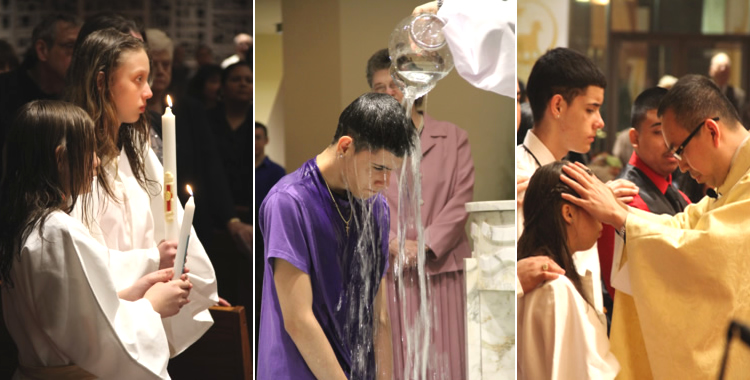
Image above this article is the baptism of Clovis, King of the Franks, in Reims on Christmas Day, 508, in a painting from c. 1500. Here is a more recent baptism of teens in a Catholic Church. Following the water baptism they put on white robes and receive the laying on of hands for the dealing of the Holy Spirit.



